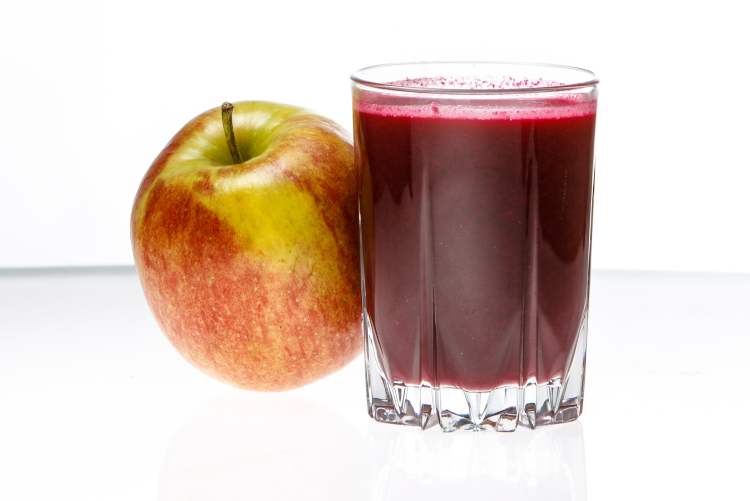Eating better leads to feeling better, so expand your nutrition knowledge with our pop quiz
Advertisement
Read this article for free:
or
Already have an account? Log in here »
To continue reading, please subscribe:
Monthly Digital Subscription
$0 for the first 4 weeks*
- Enjoy unlimited reading on winnipegfreepress.com
- Read the E-Edition, our digital replica newspaper
- Access News Break, our award-winning app
- Play interactive puzzles
*No charge for 4 weeks then price increases to the regular rate of $19.00 plus GST every four weeks. Offer available to new and qualified returning subscribers only. Cancel any time.
Monthly Digital Subscription
$4.75/week*
- Enjoy unlimited reading on winnipegfreepress.com
- Read the E-Edition, our digital replica newspaper
- Access News Break, our award-winning app
- Play interactive puzzles
*Billed as $19 plus GST every four weeks. Cancel any time.
To continue reading, please subscribe:
Add Free Press access to your Brandon Sun subscription for only an additional
$1 for the first 4 weeks*
*Your next subscription payment will increase by $1.00 and you will be charged $16.99 plus GST for four weeks. After four weeks, your payment will increase to $23.99 plus GST every four weeks.
Read unlimited articles for free today:
or
Already have an account? Log in here »
Hey there, time traveller!
This article was published 06/05/2013 (4579 days ago), so information in it may no longer be current.
WATCHING “mindless TV shows” is how the majority of readers have passed their time during Manitoba’s extended winter, according to a recent Winnipeg Free Press web poll. Meanwhile, nearly 20 per cent of readers said they were keeping their minds off the cold by eating more so-called comfort food.
Itching to fight your sluggishness and get back to your healthy and active self?
Take this pop nutrition quiz to renew your spring quest for good health:

1. You pride yourself in keeping your sugar consumption to a minimum. But are you really accomplishing the feat? Which of the following beverages contain the most sugar?
A. One cup of unsweetened apple juice
B. One can of regular Coca-Cola
C. One small blueberry-pomegranate smoothie with yogurt from McDonald’s
The smoothie contains the most sugar at 44 grams for a 347-gram serving.
A 240-millilitre can of regular pop comes in second at 39 grams of sugar.
Meanwhile, the apple juice contains a whopping 29 grams of sugar in a mere cup. (That’s more than seven teaspoons!) The lesson: All of the above beverages are high in sugar and should only be consumed occasionally. Remember that even though the smoothie and juice contain vitamins, they are high in sugar and calories. Something else to consider: They do not contain the fibre of whole fruit.
That means they cause extreme spikes in blood-sugar levels, which can lead eventually to extreme blood-sugar drops and subsequent hunger. Craving something juicy? Opt for a whole apple or orange and skip the juice. Your best thirst quencher: good old H2O.
2. Experts agree that levels of cholesterol (and other lipids/ fats found in the blood) are markers for life expectancy. Identify whether elevated levels of the following are healthy or unhealthy:
A. HDL
B. LDL
C. Triglycerides
HDL — or high-density lipoprotein — is considered healthy, so a higher blood level of this type of cholesterol is a good thing for most people. Experts say HDL actually helps bad cholesterol slide out of the arteries, keeping them squeaky clean and free of plaque.
LDL — or low-density lipoprotein — is considered unhealthy, so most people should aim for lower amounts of LDL in the blood.
(LDL increases plaque in the arteries therefore making blood flow more difficult.) Triglycerides, another type of blood lipid, are also considered unhealthy. Most researchers say lowering intake of simple carbohydrates, increasing daily exercise and reducing belly fat help blood triglycerides diminish. Have trouble remembering the differences between HDL and LDL? Think of the “H” in HDL as healthy and the “L” in LDL as lousy.
3. Scientists are calling vitamin D the “sunshine vitamin,” since the body produces the nutrient when exposed to sunlight. More than one million Canadians are at risk of developing potentially serious health problems because they aren’t getting enough vitamin D, according to Statistics Canada. Here in Manitoba, the risks are greatest when it’s impossible to go outside with bare skin. (Hopefully that will change this week if the thermometer finally rises to seasonal spring temperatures.) Which of the following foods is not a source of vitamin D?
A. Tuna
B. Egg yolks

C. Red wine
Answer: Red wine does not contain any vitamin D; it’s the tuna and egg yolks that contain the bone-strengthening nutrient, which also, according to recent research, may protect you from so-called autoimmune diseases and cancer. Interestingly, few foods naturally contain vitamin D. (Egg yolks and tuna are among the few, with tuna containing the most. Salmon is also a good source of vitamin D,) Keep in mind that many foods — such as milk — are fortified with vitamin D.
4. Canada’s Food Guide suggests adults consume seven to 10 servings of fruit and vegetables daily. All but one option below makes up one serving. What option constitutes two servings of this food group?
A. One mango
B. Four Brussels sprouts
C. One cup romaine lettuce
The answer is A; one mango contains two servings. Meanwhile, both the Brussels sprouts and the lettuce constitute one serving.
Many Canadians complain it’s too hard to consume 10 servings of fruit and vegetables everyday. But the task is not that daunting considering single serving sizes of fruits and veggies are fairly small. Examples of single servings of fruits and veggies include one large carrot, or half an avocado or one medium apple.
5. Fibre can help us feel fuller longer, as well as keep our colons and digestive systems healthy. Which of the following foods contain the most fibre?
A. One slice of 100 per cent whole-wheat bread made with whole grains
B. One-quarter cup whole, raw almonds
C. Three-quarters of a cup of frozen raspberries
Raspberries are the winner here, containing a hefty nine grams of fibre (and only 70 calories) for every three-quarters of a cup. A quarter-cup of almonds contain a healthful four grams of fibre, while one slice of Dempster’s original 100 per cent whole wheat bread with whole grains contains two grams of fibre. The lesson: Don’t be fooled into thinking that bread is always the best source of fibre. And keep in mind that adults need at 26 to 35 grams of fibre daily to stay well, according to Health Canada. The Canadian Diabetes Association recommends people with diabetes consume up to 50 grams of fibre daily.
Have an interesting story idea you’d like Shamona to write about? Contact her at shamona.harnett@freepress.mb.ca


